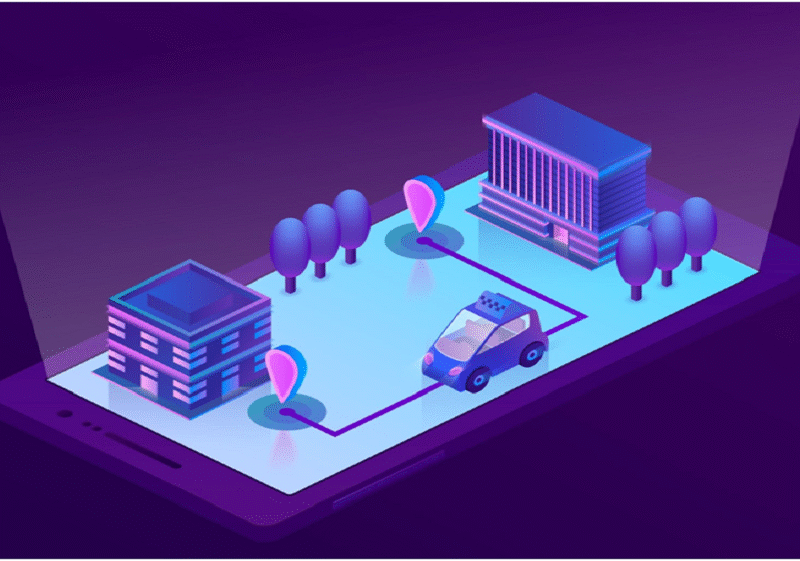Fleet tracking and logistics have entered a new era with the rise of the Internet of Things (IoT). What was once a manual and delayed process is now becoming automated, precise, and intelligent. With smart sensors, SIM-based tracking, and real-time dashboards, businesses can now gain control over their supply chain like never before.
This shift isn’t just about adopting new tools—it’s about creating safer roads, cutting costs, and keeping customers satisfied. In this blog, we will see how IoT is transforming fleet tracking and logistics operations across industries.
What is IoT in Logistics?
The Internet of Things (IoT) refers to connected devices that can communicate with each other and exchange data through the internet. These devices include sensors, trackers, controllers, and gateways used across multiple sectors.
In logistics, IoT plays a critical role in real-time visibility, automation, and decision-making. It enables better coordination between fleet vehicles, warehouses, and delivery personnel.
Why It Matters in Logistics
The logistics sector is complex, with multiple vehicles, routes, and touchpoints. IoT simplifies this complexity by automating tracking, reducing manual errors, and providing instant alerts.
Key Benefits of IoT in Fleet Tracking
IoT brings measurable improvements to the fleet and logistics space. Here are some of the biggest benefits:
- Real-Time Vehicle Location:Managers can view current positions of all vehicles instantly.
- Fuel Efficiency:Monitor mileage and detect overuse or leakage.
- Driver Behaviour Analysis:Data from speed, braking, and idling helps improve road safety.
- Predictive Maintenance:Reduce breakdowns by servicing vehicles based on actual usage.
- Delivery Accuracy:Accurate ETAs improve customer experience and reduce failed deliveries.
Technologies Behind Smart Fleet Tracking
Modern fleet management is powered by a mix of low-power sensors, connectivity networks, and intelligent platforms.
GSM and SIM-Based Tracking
These trackers operate using mobile networks instead of satellites. They provide reliable coverage across cities and rural areas without needing GPS access.
NB-IoT and 5G
NB-IoT is a specialised network for low-bandwidth, long-range applications. Combined with 5G, it ensures better data speed, battery efficiency, and network reliability for trackers.
Cloud Platforms and AI
The data collected from IoT devices is processed in the cloud. AI tools analyse this data to detect anomalies, suggest optimised routes, and issue automated alerts.
Must-Have IoT Features for Fleet Operators
For logistics managers, these are some features to prioritise when implementing IoT solutions:
- Geofencing:Set boundaries and receive alerts if vehicles move beyond assigned zones.
- Battery Monitoring:Track battery levels of IoT trackers to prevent device failure during transit.
- Custom Alerts:Get notifications for speeding, harsh braking, or route deviations.
- Route Playback:View the complete trip history of each vehicle to verify routes and timings.
- Central Dashboard:Manage all data from one screen. Helps track fleets across multiple regions easily.
Real-World Applications in Indian Logistics
Indian companies across industries are adopting IoT at scale. Here are some key use cases:
E-Commerce and Courier Services
Delivery vehicles are now monitored in real-time. This allows better coordination between fulfilment centres and last-mile delivery.
Cold Chain Logistics
Temperature sensors in refrigerated trucks ensure that perishable goods stay within safe ranges. Alerts are triggered for any drop in cooling efficiency.
Third-Party Logistics (3PL)
Companies outsourcing delivery to partners now gain full visibility over fleet activities. This ensures accountability and performance monitoring.
To support these operations, businesses can consider Airtel IoT Connectivity for secure, scalable SIM-based solutions. This platform supports a wide range of devices and applications, enabling real-time monitoring and remote management of logistics fleets. It also helps businesses leverage the Internet of Things (IoT) to stay connected across different regions without disruptions.
Traditional GPS Vs IoT-Based Tracking
While GPS tracking has been around for years, IoT-based systems offer several advantages:
| Feature | Traditional GPS Tracker | IoT-Based Tracker |
| Power Consumption | High | Low |
| Network Dependence | GPS Satellite | GSM/NB-IoT |
| Installation | Complex | Plug & Play |
| Battery Life | Few Days | Up to 192 Days |
| Suitable for | Large Fleets | All Fleet Sizes |
| Cost | High | 3x More Affordable |
| Signal Drop in Remote Areas | Common | Rare with Cellular Backhaul |
The reduced need for complex infrastructure makes IoT-based tracking ideal for small and medium logistics providers as well.
IoT Insights That Drive Decisions
IoT doesn’t just track—it informs.
- Live Tracking Dashboards: Real-time vehicle tracking allows transport managers to make on-the-fly route adjustments and reduce delays.
- Performance Analytics: Data on vehicle usage, fuel consumption, and driving patterns helps companies fine-tune their fleet strategy.
- Compliance Monitoring:IoT can automatically log activities like rest breaks, engine hours, and delivery timelines for audit and compliance.
Future-Proofing Logistics with IoT
The logistics sector is scaling rapidly, and so are customer expectations. Businesses that adopt IoT early will gain a competitive edge through:
- Higher on-time deliveries
- Reduced operational costs
- Increased safety and compliance
- Scalable solutions ready for growth
IoT is no longer an optional tool. It’s becoming essential for any logistics business aiming to stay ahead.
In this context, companies seeking simple and portable tracking can explore Airtel IoT SuperTracker. This smart device supports IoT Fleet Tracking & Management using SIM triangulation, removing the need for GPS. It’s ideal for Indian routes and offers long battery life, easy deployment, and accurate tracking for high-value assets or third-party shipments.
Driving the Future of Logistics with IoT
Fleet tracking and logistics are no longer just about moving goods from point A to B. They are about moving smarter, faster, and safer. IoT is enabling logistics providers to do just that.
With affordable devices, secure platforms, and real-time insights, IoT transforms the supply chain into a connected network of assets, vehicles, and people. Whether you’re delivering groceries in Bengaluru or pharma supplies to rural hospitals, IoT ensures you’re in control.
By embracing these solutions today, logistics companies can cut costs, improve customer satisfaction, and future-proof their operations for tomorrow.

